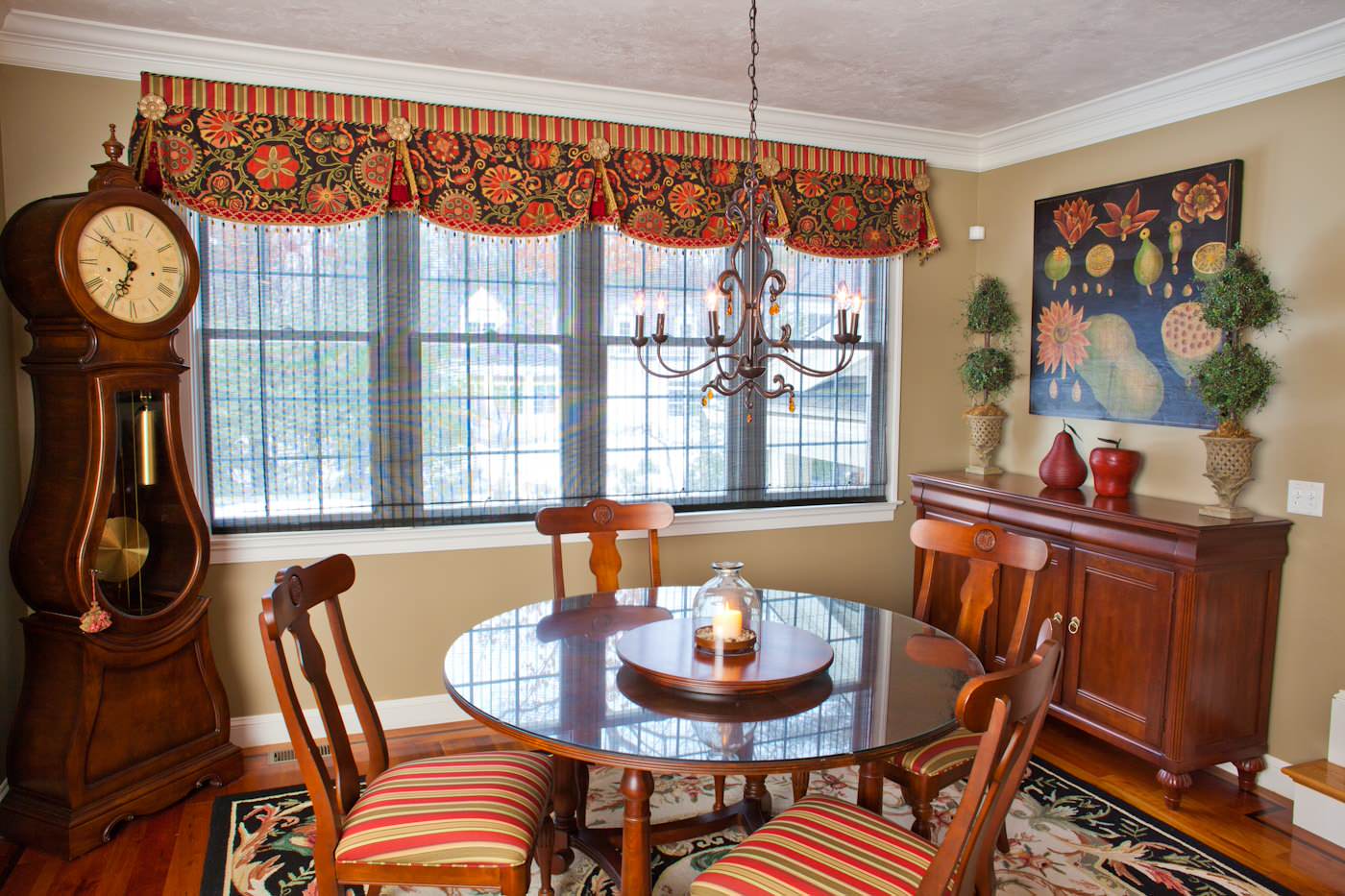Valances have been around for centuries, but the tabletop design became a staple of home décor when combined with table lamps in the early 20th century. Today, the word “valance” is typically associated with fabric window treatments hung above or below a window treatment—whether it is sheers, blinds, shades, etc.
Valance-style drapes can also double as a small canopy above a bed. They come in many different styles and materials to accentuate any room’s décor. Here are some of the best choices for adding this timeless style to your home:
1.) Fabric Valance: The Elegant and Exquisite Window Treatment
One of the most common ways to add valances around your windows is by attaching them to decorative rods using rings, clips, or even suction cups. Fabric—typically cotton—is among the most affordable and widely used valance materials.
However, the material is subject to fading due to sunlight exposure, cooling drafts from windows that are opened frequently, and general wear and tear over time. If you want the fabric to remain vibrant over years of use, try using a polyester blend instead. It’s more colorfast than cotton and resistant to issues like static build-up.
2.) The Drape: A Versatile Window Treatment for Elegant Spaces
A drapery valance can be similar in style and appearance to fabric valances with one major difference: draperies hang directly on your window without any sort of rod beneath them.
Draperies work well in just about every room—from the living room to the dining room, bedroom, and even bathroom. They are typically made from fabric or faux silk materials that are soft to touch and elegant.
Draperies are also easy to match with décor themes because they can be any color or pattern you want. The major drawback of a drapery valance is that it requires more work to maintain its look over time.
Heavy curtains tend to sag if not supported by high-quality rods and hardware—especially ones with curved ends where it’s difficult for heavier weight fabrics to stay attached. To avoid sagging draperies, prefer rods with flatter ends instead of rounded ones.
3.) Beadboard Valance: A Stylish Window Treatment for Your Home
Beadboard valances are typically made from wood veneer, vinyl, or foam board materials. They look wonderful in any room, especially if treated with glossy paint for a finished appearance.
The major drawback of beadboard is that it doesn’t support long fabrics very well, so your hanging valance will probably be shorter than you would like. You can find ready-made options designed to fit over beadboard panels at pretty much every value price point.
These come attached to decorative rods with finials built into the end of the rod for easy installation onto an existing panel. Screw the two together, and you have yourself a new window treatment all set to go!

4.) Modern Rings: Makes for Easy Installation of Valances
Modern rings can be found attached to rod pocket valance materials that are sold at value price points. The modern ring makes installation quick and easy because you don’t need any hardware or tools—slide the rod into place with the fabric already folded over it.
This window treatment offers an excellent option if you have just moved into a new home and aren’t quite ready to install all new curtains, blinds, etc. Just buy moderate-quality valance materials in your color choice from a retailer and purchase inexpensive metal rods from a hardware store or big-box retailer.
You can install these on practically every kind of window—from the bedroom to the bathroom, living room, and kitchen.
5.) Curtains: A Popular Form of Valances for Everyday Decorating
Curtains are among the most popular forms of valance style because they are relatively inexpensive and easy to install. They work well in just about every room—from bedrooms and bathrooms to kitchens, dining rooms, family rooms, and even formal living rooms.
The main drawback is that you’ll need two separate window treatments if you want curtains on both sides of a set of double windows—one panel for each side. If you only have one panel but want it divided between two sets of windows, consider buying an extra-long rod or installing two rods so you can shorten your curtain panels to accommodate the layout of your room.
6.) Bay Window Treatments: The Perfect Option for Rooms with Large Windows
If you have a large bay window in your living room, bedroom, dining room, or den, consider bay window treatments because they work well to cover the entire span of the window without requiring any additional hardware.
Since these types of windows are usually oriented on either side of an entryway door or fireplace, multiple panels and swag layers also work very well unless you opt for one single drapery panel that draws attention to whatever is placed beneath it (such as a TV screen).
Conclusion
While choosing window coverings for your home, consider the unique needs of each room plus your personal preferences to make the best choice.


